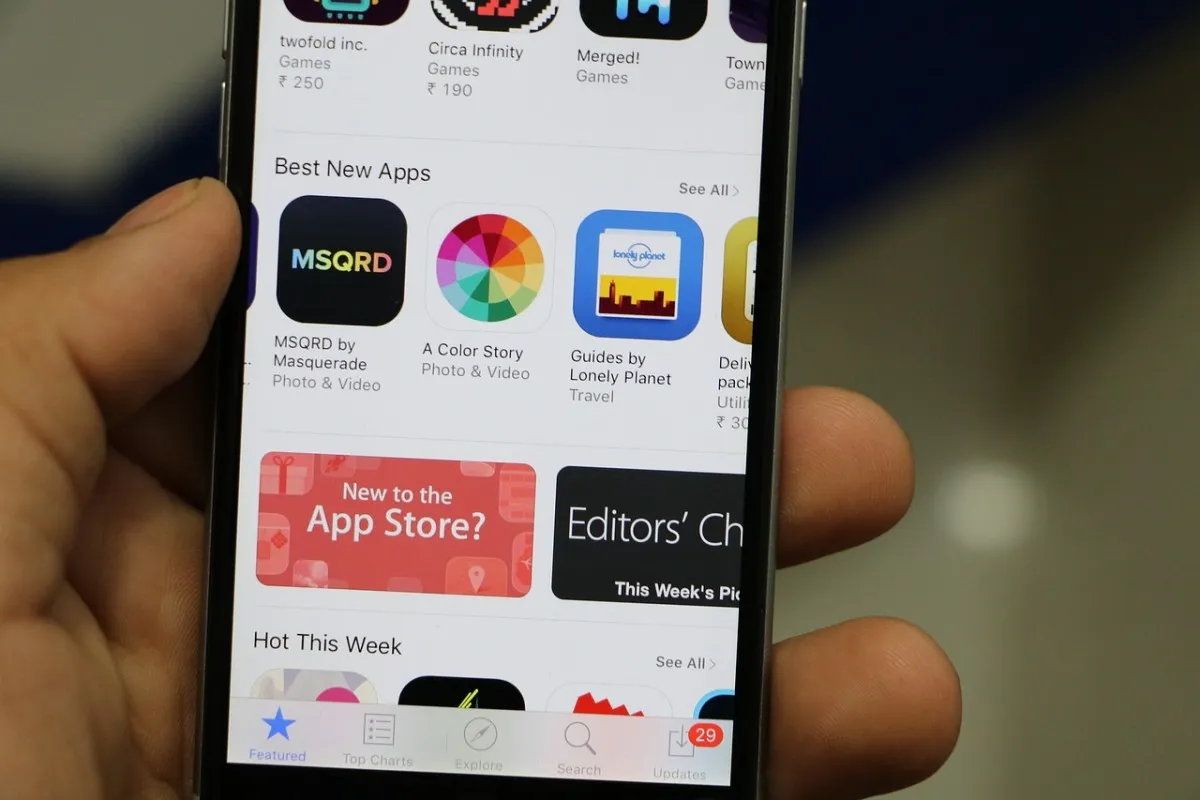Tech News
The Most Deleted Apps in USA

While trends shift swiftly and user preferences evolve, some apps find themselves on the chopping block more often than others.
Ethan Bennet from Sonin uncovers the top apps that Americans are giving the boot, shedding light on the factors driving these deletion trends.
Apps With High Deletion Rates

App Categories Under Scrutiny:
Several popular app categories are witnessing significant deletion rates. From social media giants to e-commerce behemoths, here’s a breakdown of the trends:
Social Media Platforms:
- Instagram, Facebook, and Snapchat are all experiencing notable drops in user retention. Privacy concerns, algorithmic changes, and shifting user demographics may be contributing factors.
Messaging Apps:
- Telegram’s popularity surge has hit a bump in the road, with some users questioning its security features and data protection measures.
E-commerce Platforms:
- Even retail giant Amazon isn’t immune to the uninstall trend. Increased competition, concerns over data privacy, and changes in consumer behavior could be influencing users’ decisions to bid adieu to the app.
1. Instagram:
- Changing User Preferences: Instagram’s once-unrivaled appeal as a visual storytelling platform is facing challenges amid changing user preferences. Some users may feel disillusioned by the platform’s emphasis on curated content and influencer culture, seeking out alternatives that offer a more authentic and less filtered experience.
- Competition from Rivals: The rise of TikTok and other short-form video platforms has intensified competition for users’ attention. Instagram’s efforts to replicate TikTok’s features, such as Reels, may not be resonating with all users, leading some to explore new platforms for their social media fix.
2. Facebook:
- Privacy Concerns: Facebook’s deletion trends are closely tied to ongoing concerns over data privacy and security. The platform’s history of data breaches and controversies surrounding its data-sharing practices have eroded user trust, prompting many to reassess their relationship with the platform.
- Generational Shifts: Facebook’s user base is aging, with younger generations gravitating towards newer, more niche social media platforms perceived as more authentic and less commercialized. This generational shift could be contributing to the platform’s declining user retention.
3. Snapchat:
- Privacy Concerns: Like its counterparts, Snapchat has faced scrutiny over its data privacy practices and its handling of user data. Recent controversies may have eroded trust among users, leading some to delete the app in search of alternatives that offer better privacy protections.
- Evolving Features: While Snapchat’s unique features once set it apart from competitors, the app may be struggling to innovate in a rapidly changing landscape. Users may be drawn to platforms offering similar features with better performance and user experience.
4. Telegram:
- Security Concerns: Telegram’s deletion trends may be driven by concerns over its security features and its ability to protect user data from potential breaches. Despite its reputation as a privacy-focused platform, some users may question the efficacy of its encryption protocols and data protection measures.
- Competition from Established Players: Telegram faces stiff competition from more established messaging apps like WhatsApp and Signal, which have built up loyal user bases over the years. Users may be hesitant to switch to a lesser-known platform without assurances of its security and reliability.
5. Amazon:
- Changing Consumer Behavior: Amazon’s deletion trends may reflect broader shifts in consumer behavior, particularly in response to concerns over the company’s market dominance and data practices. Some users may be exploring alternative e-commerce platforms that offer more transparent pricing, better customer service, or a greater selection of products.
- Competition from Brick-and-Mortar Retailers: Traditional brick-and-mortar retailers are stepping up their online presence, offering competitive pricing and fast shipping options to attract customers away from Amazon. As consumers become more conscious of where they spend their money, Amazon may face challenges in retaining its customer base.
Insights from Ethan:
Ethan offers insights into the driving forces behind these deletion trends:
- Privacy Concerns: Americans are increasingly aware of the importance of data privacy and are quick to ditch apps that fail to protect their personal information. Recent controversies surrounding data breaches and privacy scandals have fueled distrust among users, prompting them to seek out more secure alternatives.
- Changing User Preferences: The American consumer is a fickle beast, constantly on the lookout for the next big thing. Apps that once held sway over the masses may find themselves relegated to the digital graveyard as user tastes evolve and new competitors emerge.
- Competition from Alternatives: In the land of opportunity, there’s no shortage of alternatives vying for users’ attention. Whether it’s a new social media platform promising better privacy controls or a messaging app touting enhanced security features, Americans are spoilt for choice when it comes to finding replacements for their favorite apps.
The deletion trends observed in America offer valuable insights into the dynamic nature of the app landscape.
From privacy concerns and changing user preferences to competition from alternative platforms, there are myriad factors influencing which apps stay and which ones go.
Ethan says,
‘As users exercise their freedom to choose, developers and platforms must remain vigilant in addressing their concerns and adapting to meet their evolving needs.’
Source: https://techeconomy.ng/the-most-deleted-apps-in-usa/







